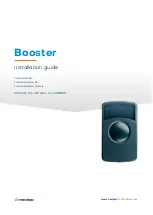
___________________________________________________________________________20
CHAPTER
5
‐
OPERATION
CAPÍTULO 5 –
USO
DRIVING
SEQUENCE
SECUENCIA DE CONDUCCIÓN
Be sure the platforms are fully closed before getting
on/off the lift.
Get in the vehicle and drive on the lift;
be sure the vehicle is centered and both rear and front
wheels are properly positioned, place the proper
rubber pads on the platform (picture 14) so that they
are in line with the lifting points specified by the
manufacturer.
Press the “lifting” button, keep it pressed
until the required height is reached. To lower the lift,
press the “lowering” button (picture 4, pos.2).
During the latest lowering phase with the button
"lowering in the dangerous area" the lift will produce a
safety acoustic signal.
During the first hours of operation cracking noises
could occur. This is due to the natural settlement of
mechanical parts and will disappear during the
following hours of operation.
CHECKS
Perform the following checks when operating the car lift:
• Carefully check the car lift and its load during
lifting/lowering operation.
• Check the warning acoustic signal operation of the
car lift during lowering phase.
• ATTENTION: When the lift is operating, there high
pressure in the hydraulic pipes (290 bar max).
If the plat-forms do not start simultaneously, this might be
due to the following causes :
air in the A2 or B2 cylinder and/or differentiated service
pressure in the lines. In this case, repeat the previous
procedure while pistons are at their max. height, operating
on the two lines alternatively several times to bleed air
and balance the service pressure.
Compruebe que las plataformas están cerradas por
completo antes de subir/bajar el automóvil del elevador.
Entre en el vehículo y conduzca hasta subirlo al
elevador. Compruebe que el vehículo está centrado y
que tanto las ruedas delanteras como las traseras
están colocadas correctamente. Coloque las
almohadillas de goma adecuadas en la plataforma
(ilustración 14) de forma que queden alineadas con los
puntos de elevación especificados por el fabricante.
Mantenga pulsado el botón de “elevación” hasta alcanzar
la altura necesaria. Para bajar el elevador, pulse el botón
de “descenso” (número 2, ilustración 4).
Durante la última fase de descenso, con el botón de
“descenso en la zona de peligro” pulsado, el elevador
emitirá una señal acústica de seguridad.
Durante las primeras horas de uso, se podrían oír
chasquidos debidos al asentamiento natural de las
piezas mecánicas. Estos ruidos desaparecerán durante
las horas de funcionamiento posteriores.
COMPROBACIONES
Al utilizar el elevador de automóviles, lleve a cabo las
siguientes comprobaciones:
• Revise minuciosamente el elevador de automóviles y
su carga durante las operaciones de elevación y
descenso.
• Revise el funcionamiento de la señal acústica de aviso
del elevador de automóviles durante la fase de
descenso.
• ATENCIÓN: Durante el funcionamiento del
elevador, habrá alta presión en las tuberías
hidráulicas (290 bares como máximo).
Si las plataformas no comienzan a moverse
simultáneamente, podría deberse a las siguientes causas:
aire en el cilindro A2 o B2 o presión de servicio
diferenciada en las tuberías. En este caso, repita el
procedimiento anterior cuando los pistones estén a su
altura máxima, activando las dos tuberías
alternativamente varias veces para purgar el aire y
equilibrar la presión de servicio.
pict. – ilust. 14
Summary of Contents for GLP 35
Page 2: ......
Page 29: ...___________________________________________________________________________27...
Page 30: ...___________________________________________________________________________28...
Page 32: ...___________________________________________________________________________30...
Page 33: ...___________________________________________________________________________31...
Page 34: ...___________________________________________________________________________32...
Page 40: ......
















































